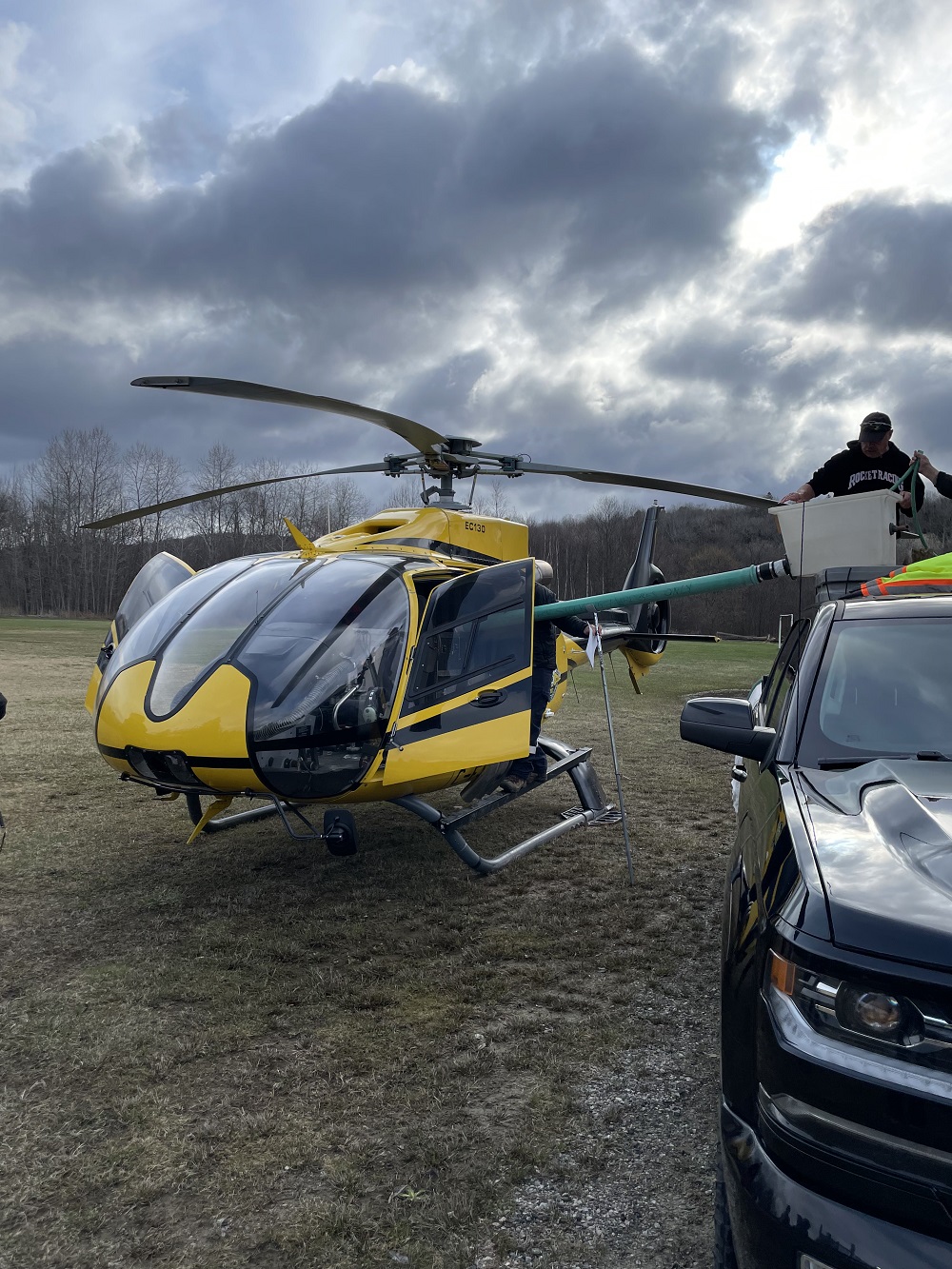The Haliburton Highlands Outdoors Association is aiming to restock around 30,000 fish into 12 area lakes this year, says its president Dan Smith.
Efforts began April 9, with volunteers transporting rainbow trout and lake trout into Maple, Glamor, Clement, and Kashagawigamog lakes. As of April 22, Smith said the HHOA had stocked approximately 15,000 rainbow trout and 5,600 lake trout.
The Ministry of Natural Resources and Forestry assisted hatchery staff April 21, using a helicopter to transport 2,000 ‘Haliburton Gold’ lake trout into Devil’s, Concession, Sheldon, and Rainy lakes.
“Stocking thousands of fish in multiple lakes is a very big job that involves a lot of moving parts and a lot of people power,”
Smith said. “Timing is critical. Water temperatures have to be just right. It’s a lot of coordination and hard work, but it’s well worth the effort to help maintain good fishing in our lakes.” Smith said the local restocking program is done in partnership with MNRF, which studies and tracks fish population levels and identifies lakes that are struggling.
He noted all fish are raised at the Haliburton hatchery, located on Gelert Road.
“Usually, we’ll do most of our restocking the old-fashioned way – we have a big trailer with a water tank on it that can hold 700 gallons of water. We’ll net the fish out of the big tanks in the hatchery and put them into the trailer. We have a water pump that circulates the water to keep it oxygenated, then we drive to whatever lake we’re stocking,” Smith said, noting they can be on the road for up to an hour before transporting the fish.
The MNRF assists with restocking on lakes that are difficult to access, Smith added. Fish are piped into six holding tanks on the chopper and released as the pilot hovers over its targeted lake.
Most stocking takes place in early spring INSTANT REFUND PROGRAM as soon as the ice has melted. Smith said the timing is perfect as cold water holds more oxygen, creating less stress for the fish in their new environment.
Smith said the HHOA restocks lakes for two reasons – to improve recreational fishing, and to protect and rebuild dwindling natural fish populations.
“It’s a big thing for our tourism sector. If we’ve got a good fishery up here, it attracts more tourists to our area, which in turn brings dollars to the area,” Smith said.
Some lakes, like Glamor, are targeted every other year, while popular spots such as Maple Lake and Kashagawigamog are stocked annually. The most recent lake rehabilitation HHOA participated in was on Salmon Lake, just north of Buckhorn in Peterborough County. Thousands of ‘Haliburton Gold’ lake trout were dropped there for three straight years from 2019 to 2021.
“I’m told by fishermen who go there regularly that the lake is a healthy fishery again,” he said.
Smith estimated the HHOA has raised and stocked more than 800,000 fish since efforts began 30 years ago. He said Haliburton has the largest community fish hatchery in the province, run largely by volunteers.
Paudash put-in
Smith attended a stocking on Paudash Lake April 16, when 2,600 lake trout were transported from the North Hastings Community Fish Hatchery in Bancroft. About 30 people attended the put-in, including Highlands East mayor Dave Burton, and coun. Angela Lewis.
Mike Thomas, president of the Paudash Lake Conservation Association, said restocking efforts have been ongoing for eight years, with almost 35,000 fish finding a new home at Paudash.
He said fish are raised for two years in Bancroft before being stocked. Estimating the cost at $6 per fish, he said Paudash Lake has received $200,000 of lake trout since 2017.





